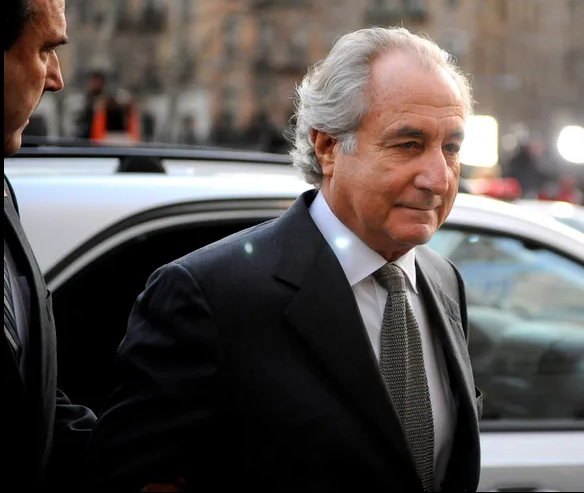
This article is more than
4 year old
The crimes committed by financier Bernie Madoff, who died Wednesday, have faded from the headlines. But his Ponzi scheme, the largest in history, was one of the biggest financial stories of the last decade.
Madoff, who was 82, was once deemed a Wall Street wizard. The former Nasdaq stock market chairman was known for investments that gave his clients, who included celebrities and charities, large, unusually steady returns.
Here's what else you need to know about Madoff and his scheme:
What did Bernie Madoff do?
It turned out that Madoff's hefty returns were actually a Ponzi scheme, where the investments made by newer investors paid off Madoff's earlier clients.
The scheme began to unravel in the midst of the Great Recession. As investors flocked to withdraw their money in 2008, Madoff didn't have the funds to fulfill the stream of requests. He eventually told his sons, Mark and Andrew, about his scam. They contacted federal authorities who arrested Madoff.
At the time of Madoff's arrest, fake account statements were telling clients they had holdings worth $60 billion. More than $13 billion of an estimated $17.5 billion that investors put into Madoff’s business has been recovered.
Madoff's client list included Hollywood luminaries, such as Steven Spielberg and Kevin Bacon. He also handled money for ordinary investors, and his scam wiped out many people's savings and retirement plans, leading some to have to go back to work or move in with friends and family.
No. Madoff pleaded guilty in 2009, saying that he ran the Ponzi scheme by himself. He was sentenced to a 150-year prison term by Federal judge Denny Chin.
The federal Bureau of Prisons confirmed that the 82-year-old died of natural causes. Last year, Madoff's lawyers filed court papers asking for his release from prison during the COVID-19 pandemic, saying he had suffered from end-stage renal disease and other chronic medical conditions. That request was denied.
A Ponzi scheme is when a person takes money from investors for a fraudulent business product. Investors think the money they are paid back is legitimate revenue from the business product, but it actually comes from newer investors. The scheme is structured like a pyramid.
Still confused? Let's say a person takes $500 from two first-round investors. With that $1,000 pocketed, this person must find another batch of investors to pay at least $1,000 combined in order to pay back the initial investors and hopefully make a profit. The chain reaction continues to get bigger in terms of people and money invested.